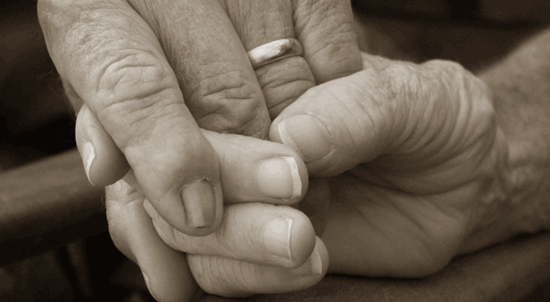
Reflections on Genesis 1:26-28 and 2:18-25.
A Theology of Marriage
by Matthew McAffee
Marriage has fallen on hard times, both in the broader culture and in the life of the church. Divorce continues to impose itself on the church, working to undermine the covenant God intended to be “until death do us part.” Most of us deal with the painful realities of divorce in our local church families.
But rather than introduce a conversation about marriage from the perspective of what is wrong, let’s reacquaint ourselves with the Bible’s grand vision for the marriage covenant instituted at creation and formulate a theology of marriage from Genesis 1:26-28 and 2:18-25.
Origin of Marriage (Genesis 1:26-28; 2:18-25)
The creation of humanity assumes a preeminent position over the rest of the created order. No other creature was created in the likeness of God (1:25). Six of the 31 verses in the first chapter of Genesis concern man and his appointment as caretaker of the earth. The notion of ruling over creation is tied directly to man’s divine image status. God states, “Let us make man in our own image, after our likeness; and let them have dominion” (1:26a). God created humanity in His own image that he might function as a divine deputy, a creature invested with God’s sanction to rule over creation.
Note the added qualification of “male and female” in the following verse (1:27). The distinction between male and female is intricately tied to God’s image in man. God blessed the newly fashioned couple and included a series of commands: Be fruitful, multiply, fill the earth, subdue it, and rule (1:28a).
Logically, we can identify a chain of action in which each successive command depends upon the former. For example, the first command to bear fruit combines the intimate union of husband and wife with what that union produces—children. [1] As they join together in fruitful union, the race of humanity multiplies, a process that fills the earth. In this context, the husband and wife essentially subdue all creatures of the earth, fulfilling their obligation to rule over the created order.
Genesis one broadcasts its view of marriage on a grand scale, making the husband and wife the centerpiece of God’s earthly activity. The responsibility invested in the first couple to maintain order in creation parallels God ordering the “formless” and “void” substance in 1:2.
Explanation of Marriage (Genesis 2:18-25)
By nature, Genesis two takes a different, yet complimentary view of the first couple in Eden. The creation of woman is momentarily deferred, heightening the anticipation of her arrival in the world of a lonely man without a suitable companion among the creatures assigned to his care (2:20). In fact, the Lord Himself acknowledges man’s loneliness and vows to make a “help meet for him” (2:18).
How do we explain Eve’s helper status? The last word of the phrase dictates the meaning of “helper”—she is “corresponding to him.” In this sense, Eve is a fellow laborer in the economy of God’s rule over creation through humankind, the sole bearer of the divine image. Unlike the animal kingdom, the woman is like the man by design. The Lord takes one of Adam’s own ribs and “builds” the woman. [2]
We find additional insight when the Lord introduces woman to man. For the first time, Adam speaks, announcing with exhilaration, “This is now bone of my bones and flesh of my flesh.” Adam’s response, coupled with the Lord’s construction of the woman from his rib, further reveals the meaning of their correspondence. They are designed for each other, fashioned of the same substance, yet not entirely identical. God fashions man out of the dust; [3] He builds the woman from Adam’s rib. Remarkably, the “man” (ish) names his newfound companion “woman” (isha), explaining, “Because she was taken out of man” (2:23).
The account concludes with two additional comments, the first clarifying the implicit appeal for marriage: “Therefore, shall a man leave his father and his mother and cling to his own wife” (2:24). [4] Since it is not good for a man to be alone, he should leave the shelter of his father and mother and shall cling unto his wife. [5]
The narrative highlights the absence of shame amidst their sacred union, despite the fact that they were naked (2:25). In the Old Testament, nakedness evokes shame, making this passage all the more astonishing to the ancients. On one hand, the absence of shame foreshadows the painful realities of sin to follow. On the other, the command for man to leave his parents and cleave to his wife permits us to conclude that the absence of shame within the marital union demonstrates its sanctity.
Theology of Marriage
The Genesis account provides six principles on which to formulate a theology of marriage.
Rule Over Creation
Marriage is the vehicle through which we carry out God’s command to rule over creation. Sin entered the world through the devastating downfall of the first couple, yet the advent of Christ and His kingdom inaugurated a restoration to Eden. Within this context, the covenant community must rekindle Eden’s vision of marriage and embrace its commission to subdue the earth to the ethic of God’s kingdom. As God blesses the holy unions of His covenant members, we are graced with the opportunity to participate in His cosmic rule, being restored to our original design.
Expect Children
Children are the anticipatory blessing of the marriage union. The biblical view does not isolate intimacy from the real potential of having children, the latter being the fruit of the former. [6]
Solution to Loneliness
It is not good for us to be alone. Although Paul allows for the divine call to celibacy (1 Corinthians 7:8), it is the exception, not the rule. In many cases, Genesis’ grand view for marriage has been exchanged for the freedom of youth, redefining marriage as something that stifles individual liberties. Marriage, then, becomes a last resort when we are ready to “settle down.”
This propensity to defer marriage poses problems for those who would marry, but have difficulty finding someone willing to “settle down.”
Husband/Wife Team
The relationship between husband and wife is complementary. Creation makes it clear that husband and wife share the same physical essence: both possess the image of God and therefore co-administrate His creation. Yet, it also maintains a level of distinction between them: they are created as male and female; man is created from the dust of the ground, woman from man’s rib; man names the woman.

Paul appeals to woman’s creation from the rib to demonstrate her submission to the husband’s spiritual leadership (1 Timothy 2:9-15). These distinctions from creation evidence the complementary roles of man and woman as they work in concert with one another, sharing the responsibility to rule God’s creation.
The fall distorted our roles so that we no longer desire to live according to design, resulting in the man’s lording authority over his wife and the wife’s disdain for her husband’s leading role. Redemption seeks to restore the harmony of the first marriage within the context of the church, as believing couples embrace the sheer delight of their God-given responsibilities, both in mutual submission to Christ, the head of the Church. [7]
Leave-and-Cleave Principle
A man should leave family and cleave to his wife. A healthy measure of separation between the son and his parents prevents unwarranted hindrances to the new couple becoming “one flesh” (2:24). Not complete separation, since extended family plays a vital role in each newly-formed home, but secondary parental ties: a son’s attachment to his mother transfers to his wife; a daughter’s attachment to her father transfers to her husband.
No Shame
Finally, the intimacy of the marital union is without shame. Undoubtedly, the fall corrupted what was once pristine. However, God’s intention for the husband and wife to become “one flesh” is part of the world God called “very good.” Our culture has transformed sexuality into a lucrative commodity, severing it from the private and mysterious closed chamber of matrimony to be peddled abroad for the masses.
The more common and mundane something becomes, the less worth it retains. Simply talking more about sexuality does not accomplish what was envisioned in Eden. Instead, the church should recapture the shamelessness of marital intimacy (both physical and emotional), secret and mysterious to the public eye, yet completely transparent and fulfilling in the eyes of husband and wife. Everything outside these constraints results in adulterated shame.
The grand vision of marriage from the first two chapters of Genesis offers a starting point for articulating a theology for marriage. It provides the bedrock for all discussions on the matter and deserves special consideration as the church seeks to preserve the glory of marriage in our world beyond Eden.
About the Writer: Matthew McAffee has taught in the Biblical and Ministry Studies Department at Free Will Baptist Bible College since 2003. He has been on leave since 2006 pursuing doctoral studies. He returns to campus this fall as a full-time instructor and will also serve as campus pastor.
Notes:
1. We should carefully observe here that the biblical perspective never separates the act of intimacy itself from the bearing of children. In the Bible, children are the direct result of God's blessing upon the sacred union of husband and wife, not an option up for the consideration of the couple. In other words, sexual union and childbearing are two parts of the whole. The biblical perspective starkly contrasts that of the sexual revolution where these two aspects have been wrongly separated. The advent of modern contraception, most notably the birth control pill in 1960, has been credited by both religious and secular voices as one of the main contributors to such a distinction. See the recent article by Nancy Gibbs, "The Pill at 50: Sex, Freedom and Paradox," Time magazine, May 3, 2010.
2. The word used here in relation to the Lord fashioning the woman from Adam literally means "to build," and does not occur elsewhere in the creation accounts.
3. The connection between man and the ground finds expression in the similarity of the sound of these two words: adam "Adam" and adama "ground."
4. Note that "wife" and "woman" translate the same Hebrew word. Hebrew does not distinguish between "wife" and "woman," perhaps indicating that the general term "woman" simply denotes a woman eligible for marriage.
5. It is interesting that the language of separation is utilized in describing the man's disposition toward his father and mother. The word utilized here is quite strong, meaning "to abandon, forsake," as opposed to the equally strong imagery expressed by the word meaning "to cleave, cling to," often with a sense of intimacy.
6. This reality becomes painfully clear in cases of infertility, preventing a couple from having children. In such instances, the church must exercise gracious compassion toward those couples who are wrestling with the hard realities of infertility.
7. We might also compare the roles of men and women to the Trinity: the Father is well pleased with the Son, the Son submits to the will of the Father, and the Spirit bears witness to the Son. All three members of the Trinity are equally God, while at the same time maintaining distinct roles.
|

